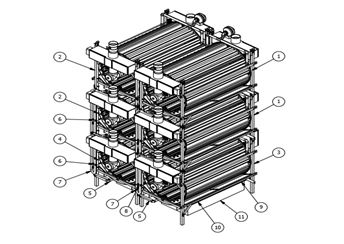
Guest post by George Robinson, CEO of RavenQuest Biomed
Last month, Health Canada released a document outlining the framework for impending recreational cannabis legalization. Among many takeaways was a streamlined license application process allowing for faster approval times. The framework also suggests a new class of license for “micro-cultivators”, which appears to be an invitation to that country’s untold number of black market participants to enter the legal realm of cannabis production, meaning the cannabis space will likely become more crowded.
The Federal Government is cognizant that the illicit market has costs around $0.50 per gram, and it’s obvious the new framework is aimed at opening up the supplier side to compete with – and ultimately crowd out — the illegal market.
As is the case with alcohol sales, each province will create its own distribution model for cannabis. Most provinces have released the broad strokes of what their respective models will look like, and it’s clear that a wholesale model will emerge, pushing realized prices from $8-$10 per gram to $5-$6 or lower and placing increased importance upon maximized production per square foot of grow space.
To fight inevitable margin pressure, producers need to look beyond raw square footage and focus on the proper and efficient use of grow space (let alone precious market capital). Flat table growing environments, prevalent throughout the industry, will face increased economic challenges as the industry matures. Based upon our experience working with several licensed producers, we believe that the industry may soon embrace a new technology, enterprise grade rotational gardening.
While the basic technology of growing plants inside a rotating drum with a light source down the middle has been around for decades, we have taken this simple concept and added an enterprise overlay allowing for industrial scale production. This overlay includes a completely automated system, allowing one operator to control all of the grow variables remotely using a human-machine interface.
This automated garden system controls the nutrient levels, acidity, CO2, water levels, water temperature, lighting, rotational speed and dozens of other growing variables for optimized conditions. Our gardens have been engineered to produce cannabis in a near perfect growing environment.
We then stack the gardens three-high and two wide to form a cluster known internally as a “six-stack”:

Our internal testing shows that the Orbital Garden 2.0 system, which is commercially scalable, will result in production beginning at 300 grams per square foot (of live growing space), double or even triple the industry averages. Additional efficiencies include:
- Up to 300 plants per garden
- 70%-80% reduction in electrical costs, 25% reduction in nutrient costs
- HD remote crop monitoring
Remote automation also dramatically reduces human traffic into the grow-room, a known vector for plant infection.
The energy sector commonly uses a term known as BOE (Barrels of Oil Equivalent) to paint a picture of how much energy reserves a particular company owns, regardless of whether that energy is stored in Oil or Natural Gas. It’s cumbersome to parse a company’s energy reserves into various different measurements, so BOE provides a singular measure which tells the world how much energy is owned by a company.
Internally, we took a similar approach using the term “Flat Table Equivalent” to compare our technology to a flat table grow environment, essentially comparing apples-to-apples.
Our Gardens are round, not flat, unleashing the power of Pi. In practise, this means that each six-stack of our gardens occupies a footprint of 70 square feet, but contains 500 square feet of grow space. This math opens up a completely different conversation when talking about licensed square footage, facility size, cost control and production efficiency.
As the cannabis industry unfolds before our eyes in Canada, what becomes clearer from last month’s developments are that margins will ultimately narrow, underscoring the importance of profitable square footage over absolute square footage.

About the author:
George Robinson, CEO of RavenQuest BioMed (CSE: RQB), has a lengthy history of helping several ACMPR applicants become licensed producers in Canada. Through his work, Robinson is in a unique position to see the myriad approaches to cannabis cultivation currently being used across Canada.
Are you a cannabis industry thought leader and want to be heard? Let us know your story.
